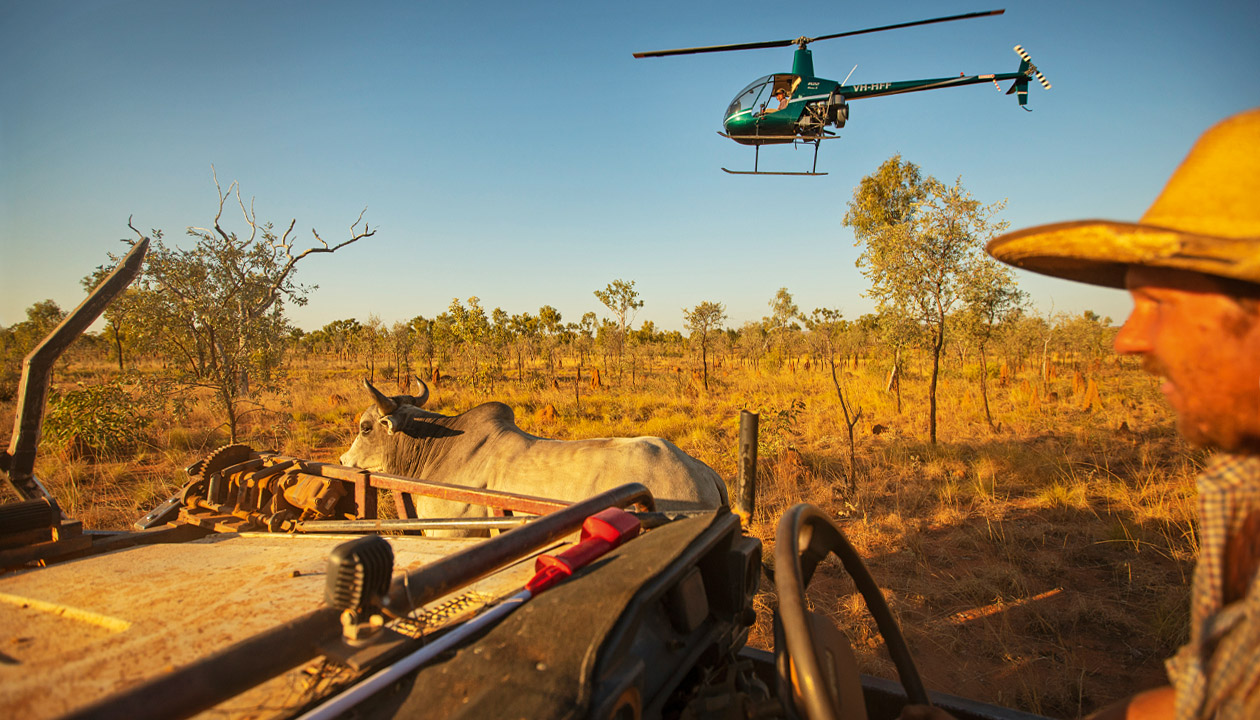Catching wild bulls remains an iconic part of northern Australia, with big risks and bigger rewards.
Story + Photos Nathan Dyer
On a clear afternoon in August, Lach McClymont leans on the steering wheel of his battered short-wheelbase Toyota and waits. Parked beneath a towering ghost gum on a wild, million-hectare swathe of country in the NT’s far north-east, Lach scans the scrub ahead.
The chatter of rotor blades can be heard in the distance as pilot Nathan ‘River’ MacDonald manoeuvres his machine along a creek line looking for wild bulls. Last year, Lach and his team mustered more than 2000 cleanskin cattle from this bit of country, 400km north-west of Mount Isa. This season, they’re only chasing bulls.
Moments later, Lach’s radio crackles to life. “What’s that flat like ahead of you there, Lach?” “Pretty good going, Riv: that’s the best playground we’re going to get,” Lach responds. Suddenly three big bulls burst from the creek and charge onto the flat. The LandCruiser roars into the late afternoon sun. Locking his eyes on the biggest, an 800kg brindle beast with wide horns, the Goondiwindi-raised bull catcher works through the gears, swerving between trees, branches smashing against the Toyota and termite mounds disintegrating in clouds of dust.Thirty seconds later, with a flick of a switch on the gearstick, a hydraulic arm on the front of the Toyota ratchets down over the beast’s bulging neck and Lach slows the vehicle to ‘walk’ the animal to a nearby tree. As Lach steps from the vehicle to tie up, the bull swings wildly with its sharpened horns, like a boxer searching with a left then right hook. It’s a hit Lach is very careful to avoid. With the nearest hospital three hours’ drive away, any injury here can quickly become serious.
Across the flat, on quad bikes, Nick Scanlon, Peter ‘Skinny’ Lord and Charlie Ryan spray long rooster tails of dust in the air as they close in on the remaining two bulls, which they’ll run down, then hobble strap and wait for Lach to walk to a tree. The bulls here will have their horns ‘tipped’, and be branded and tagged, before being trucked back to portable yards at the team’s main camp, then to meatworks in Townsville.
Ninety minutes later, as the sun casts long shafts of light through the settling dust, Lach and the boys pull up, crosschecking what they’ve caught. “That totals 17,” Lach says with a grin. “Not bad for an hour-and-a-half’s work.”
With South-East Asian markets keen for heavier cattle, and the United States paying a premium for lean grinding meat, wild-caught bulls like these are in high demand. Although feral herd numbers are significantly lower than they were prior to the eradication efforts of the national Brucellosis and Tuberculosis Eradication Campaign (BTEC) – which finished in 1997 – anecdotal estimates suggest tens of thousands of feral cattle still roam northern Australia. Good bulls are worth more than $1000 each, so the incentive to catch them is high.
This story excerpt is from Issue #128
Outback Magazine: Dec/Jan 2020









